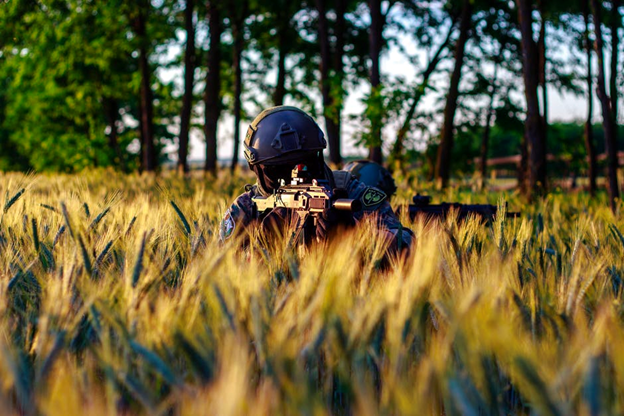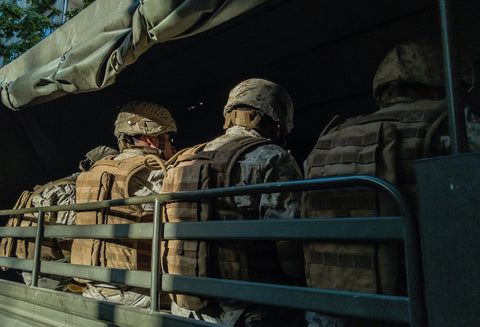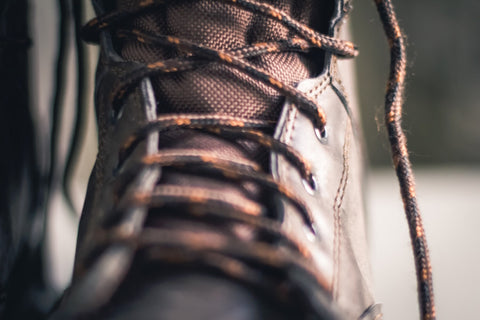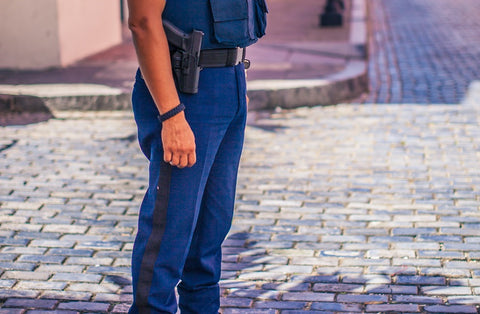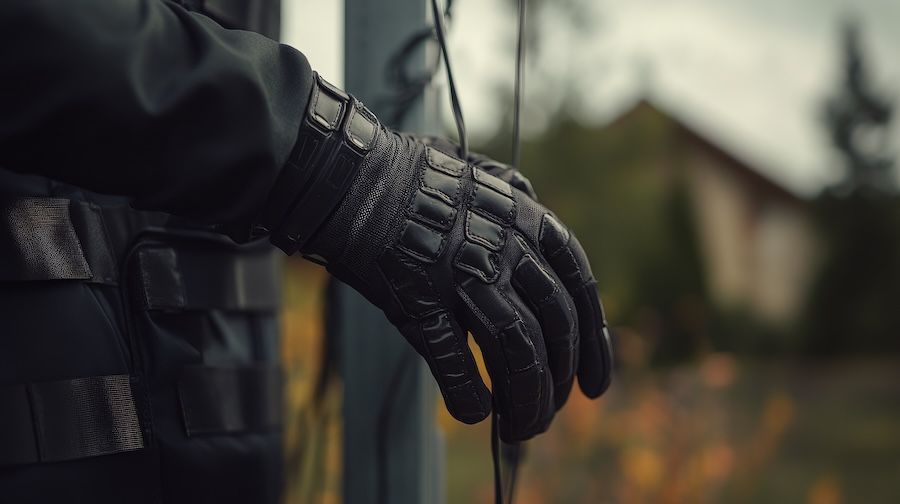Choosing the Best Tactical Clothing for Extreme Weather Conditions

When it comes to tactical operations, the right gear is more than just an accessory; it’s your protection, your edge.
Whether you’re a member of law enforcement, military personnel, or a security professional, selecting the right tactical clothing for the weather conditions is crucial for your safety, performance, and comfort.
These clothes are built with durability, functionality, and specialized materials that make them reliable, whether you’re patrolling city streets, hiking in remote areas, or handling high-pressure situations.
Strong stitching, ripstop fabrics, and reinforced seams ensure your gear can withstand the toughest conditions. Choosing gear that keeps you comfortable, protected, and efficient, regardless of the weather, is not just a matter of convenience; it’s about ensuring your safety and enhancing your performance in extreme environments.
Understanding Tactical Clothing for Harsh Environments
Tactical clothing is far more specialized than your everyday clothes. It’s made to handle the demands of both the environment and the job you do, combining durability, function, and specialized materials that protect you in challenging conditions.
It’s not just about style, it’s about designing gear that gives you an edge in critical situations. Think of tactical gear as an extension of your personal defense.
Unlike regular apparel, tactical clothing is constructed from high-performance materials like ripstop fabric, which resists tearing and damage. This makes it ideal for intense physical activity in harsh environments, where durability is essential.
You need gear that can withstand abrasions, rough terrain, and extended wear without breaking down. The seams are often reinforced, and the stitching is stronger to ensure that your gear can handle whatever you throw at it.
Functionality is another key feature of tactical clothing. The design is strategic, with pockets and storage space positioned for quick and easy access to your most essential tools. Breathable fabrics allow for proper airflow to keep you cool under pressure, even during extended operations.
When choosing the right tactical clothing for extreme environments, it’s not only about the materials, but also the way they are put together. Clothing needs to provide flexibility, mobility, and comfort to avoid restricting your movements.
Moreover, clothing materials are specifically selected to cater to different climates. For hot weather, moisture-wicking fabrics are paramount to help you manage sweat and prevent overheating.
For cold climates, insulation materials like fleece or synthetic down help trap body heat and keep you warm. The versatility of tactical clothing is one of its biggest strengths; it adapts to the environment, ensuring that you’re prepared for whatever conditions you encounter.
Tactical Clothing for Hot Weather
When temperatures soar, it becomes critical to select the right gear that allows you to remain cool, comfortable, and protected. Overheating can be dangerous, especially in high-stakes situations, so tactical clothing for hot weather should focus on moisture management and breathability.
The first thing to prioritize is fabric. Look for lightweight materials that wick moisture away from your skin to help regulate body temperature. Fabrics like polyester, nylon, and merino wool are ideal in these conditions.
Polyester, for example, is a synthetic material known for its moisture-wicking properties. It quickly pulls sweat from your skin to the fabric’s surface, allowing it to evaporate faster. This helps to keep you dry and cool, even in high heat.
Merino wool is another great option. It may sound counterintuitive to wear wool in hot weather, but merino wool is an exceptional fabric that can wick away moisture while still keeping you comfortable. It’s naturally breathable, moisture-wicking, and odor-resistant, making it perfect for hot environments where you need to stay fresh.
Beyond the fabric itself, the design of your gear also plays a significant role.
Base layers are incredibly important. Opt for moisture-wicking shirts and undergarments that provide a solid foundation for your outfit. Ventilated shirts are essential as they allow air to flow freely to your skin. Some shirts come with mesh panels under the arms or along the sides, which enhance airflow and help prevent you from overheating. You’ll want pants that are lightweight and allow for ventilation. Look for options that feature zippered thigh vents that can be opened for extra airflow when needed.
Socks are another important item that shouldn’t be overlooked. Wet feet can lead to blisters, discomfort, and even infections. Choose socks made from breathable, moisture-wicking materials, such as merino wool or synthetic blends. These materials will help keep your feet dry and comfortable, no matter how long you’re on your feet.
Tactical hats with mesh panels or breathable fabrics can make a significant difference when you’re in the sun for long hours. These hats allow air to circulate while providing protection from the sun's harmful rays. Ventilated gloves are also useful, as they keep your hands cool while still offering protection.
For intense heat, accessories such as moisture-wicking neck gaiters and cooling towels can help you maintain a lower body temperature and prevent overheating.
Sun Protection: Beyond Staying Cool
While staying cool is a priority, you can’t forget about the dangers posed by the sun. Prolonged exposure to UV rays can lead to sunburn, skin damage, and an increased risk of skin cancer. That’s why sun protection is a critical part of your gear.
Sun protection in tactical clothing goes beyond wearing a simple sunscreen.
Look for clothes that are specifically designed to block UV rays. The Ultraviolet Protection Factor (UPF) rating is key to understanding how well a fabric can block UV rays. UPF is similar to SPF for sunscreen, but it applies to fabrics. A higher UPF rating means better protection from UV radiation.
For instance, a shirt with a UPF rating of 50 blocks 98% of UV radiation, making it a great choice for long hours in the sun.
Tactical gear like long-sleeve shirts made from lightweight, breathable materials can protect your arms without causing you to overheat. These shirts are designed to shield you from harmful rays while allowing air to flow through to keep you cool.
Wide-brimmed hats are another essential item to keep in mind. A hat with a wide brim not only keeps the sun off your face and neck but also provides some shade to your shoulders, reducing the risk of sunburn in those areas. For added protection, you can also use neck gaiters, which are adjustable and provide coverage for your neck and face when needed.
Tactical sunglasses are also critical in preventing eye strain. Not only do they protect your eyes from UV rays, but they also reduce glare, improving your visibility in bright conditions. Polarized lenses are a great choice for enhancing your vision while minimizing the discomfort caused by the sun’s glare.
Even on cloudy days, UV rays can still penetrate through the clouds and cause damage to your skin. This is why it’s important to remain vigilant with sun protection no matter the weather. With the right UV-resistant clothing and accessories, you can stay cool, shielded from harmful rays, and ready to take on whatever the day brings.
Tactical Gear for Wet and Humid Conditions
Hot weather isn’t always dry. Humidity can turn a warm day into an exhausting experience. Tactical gear for wet and humid conditions needs to balance moisture management with breathability. Sweat doesn’t evaporate as quickly, leading to uncomfortable, sticky situations.
Tactical gear for wet and humid conditions needs to focus on - you guessed it - quick-drying and moisture-resistant properties.
Quick-dry fabrics are ideal for these environments because they help wick moisture away from your body and allow it to evaporate faster, keeping you dry even when the air is saturated with moisture.
Fabrics like nylon and polyester are typically used in quick-drying gear because of their ability to absorb minimal water while allowing moisture to escape. These fabrics dry faster, which is essential when you're working in humid conditions where sweat is inevitable.
Tactical jackets designed for wet environments need to be waterproof but still breathable. Look for waterproof jackets that incorporate breathable membranes. These jackets keep rain out while allowing sweat and body heat to escape, preventing you from overheating. Some jackets are equipped with adjustable vents and zippers to further enhance airflow.
Waterproof pants with water-resistant coatings will help protect you from getting drenched in heavy rain while ensuring that you remain comfortable for long hours on the move.
Don’t forget about your socks. In wet and humid conditions, socks can quickly become soggy, causing discomfort, blisters, and irritation. Choose socks made from antimicrobial and moisture-wicking materials to help prevent the buildup of bacteria and reduce foot odour. Quick-dry socks can keep your feet dry even after long treks through humid terrain.
When it comes to footwear, your boots need to be both waterproof and breathable. Look for boots that incorporate moisture-wicking linings to keep your feet dry and cool. Choose boots with breathable waterproof membranes that allow moisture to escape while still keeping water out. Comfort is key here, so prioritize lightweight boots with ventilation, as they’ll keep your feet from feeling stifled during intense activities.
Practical Tips for Maintaining Your Tactical Gear
Your tactical gear is an investment, and like any investment, it needs care and attention to last. Regular maintenance ensures that your clothing and gear continue to perform at their best, no matter what conditions you face.
Start by following the care instructions provided by the manufacturer. Washing tactical clothing improperly can strip away its performance features, such as moisture-wicking capabilities or waterproof coatings.
For example, using fabric softeners on moisture-wicking materials can clog the fabric’s pores, making it less effective. Always use the recommended detergents for specific gear.
Tactical outerwear that’s been treated with Durable Water Repellent (DWR) should have the DWR coating reapplied periodically. Over time, the coating can wear off, leaving your gear less effective in wet conditions. To keep your gear in tip-top shape, wash it according to the manufacturer’s instructions and then apply a DWR treatment to restore its water-repellent properties.
Regularly inspect your gear for signs of wear and tear, especially in high-stress areas like zippers, seams, and cuffs. If you spot any issues, address them promptly to avoid larger problems down the line. For example, repairing a small tear in your pants early can prevent it from becoming a larger rip that compromises your clothing's integrity.
Conclusion: Always Ready, No Matter the Weather
Choosing the right tactical clothing for extreme weather isn’t just about comfort. It’s about safety and effectiveness. Whether you’re facing scorching heat, pouring rain, or freezing cold, having the right gear keeps you focused and ready for anything.
Invest in quality materials, maintain your gear properly, and prioritize comfort and protection. That way, you can focus on your mission without distractions.


